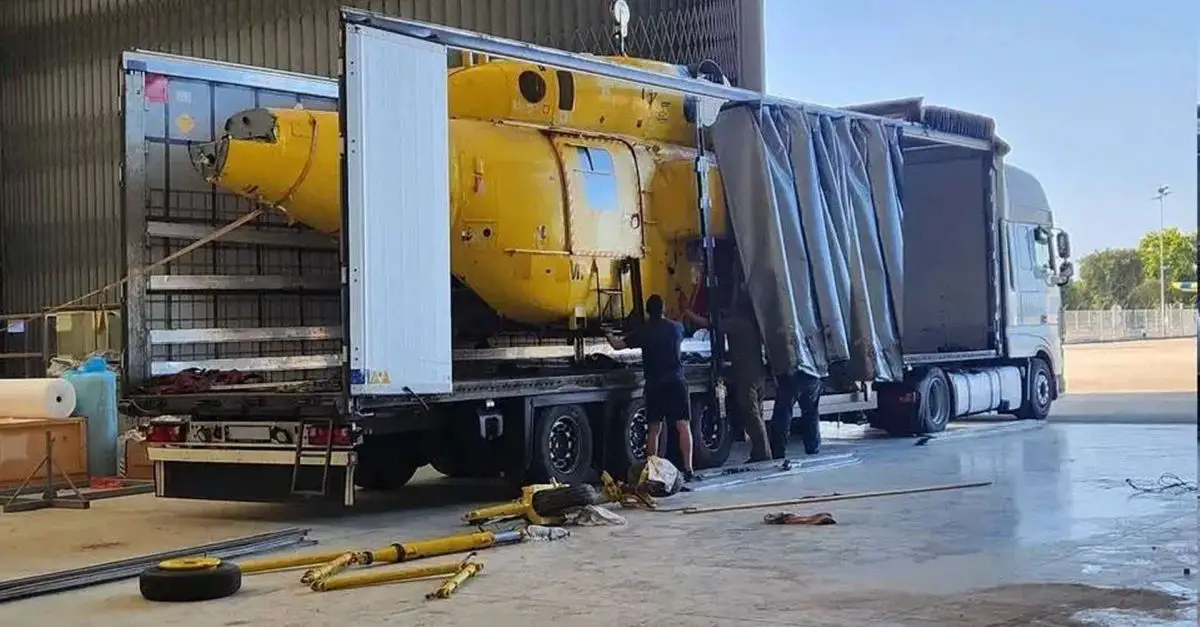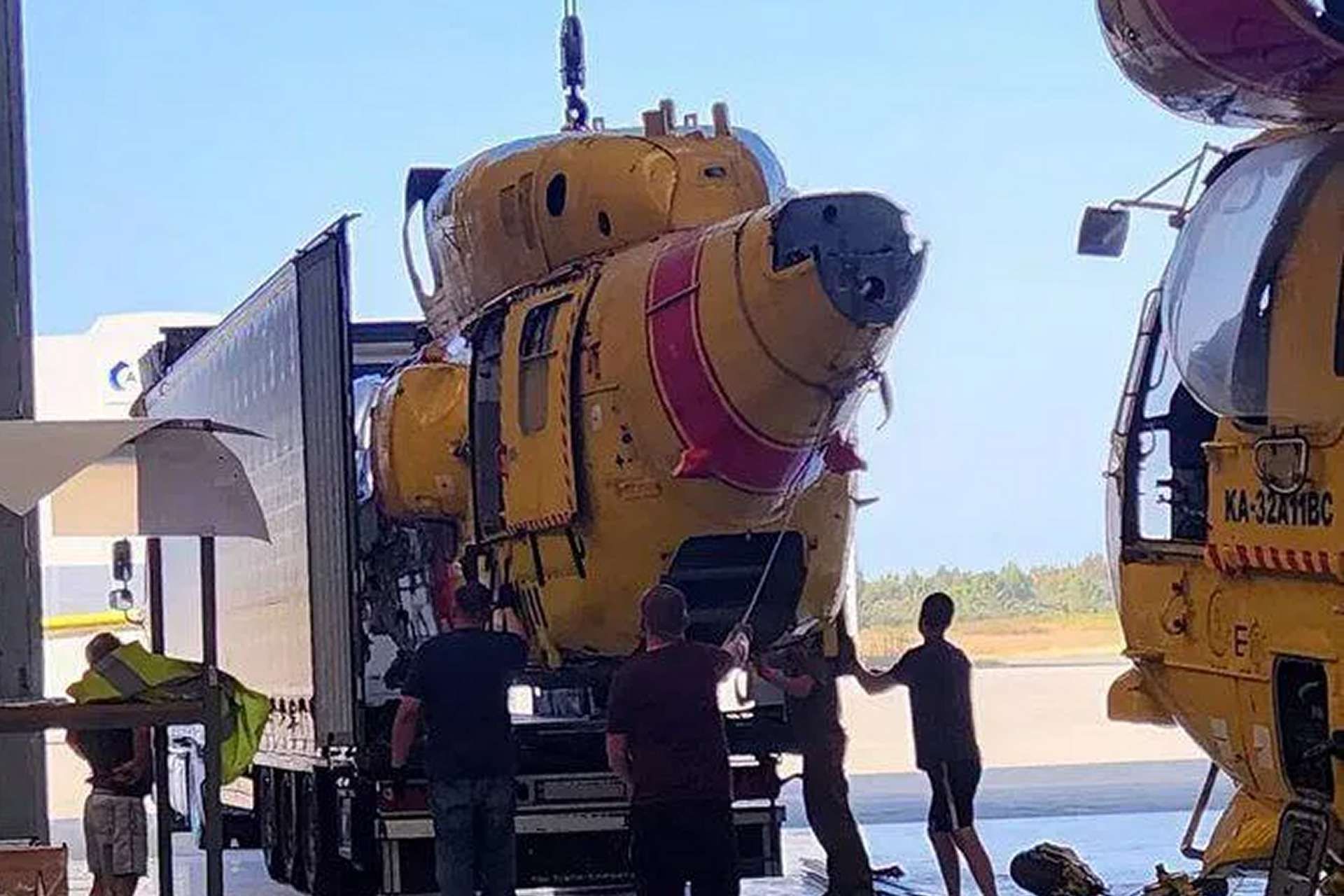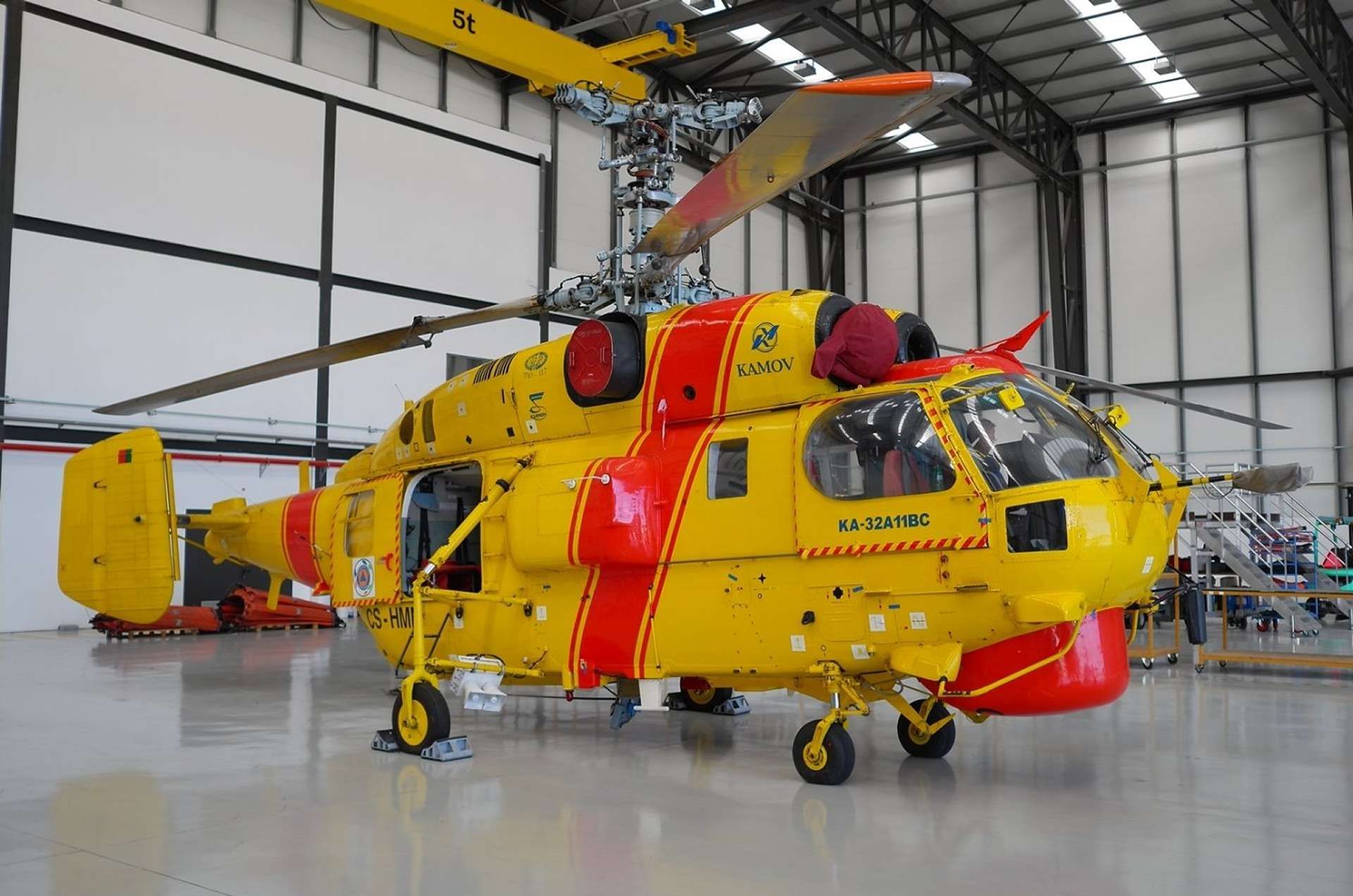Breaking News
Portugal completes transfer of six Russian Kamov Ka-32A11BC helicopters to Ukraine.
On September 6, 2024, the Portuguese Ministry of National Defense announced that the final truck carrying Kamov helicopter parts bound for Ukraine had left the EMA facilities in Ponte de Sor. This action concludes the transfer of six Russian Kamov Ka-32A11BC helicopters to Ukraine, following a donation request made by the Ukrainian government to Portugal on February 23, 2023. The helicopters have been donated in their current state of conservation.
Follow Army Recognition on Google News at this link

Portugal recently completed the transfer of six Russian Kamov Ka-32A11BC to Ukraine as the final shipment of parts leaves EMA facilities. (Picture source: Portuguese MoD)
The Ministry explained that this transfer is part of Portugal's broader donation efforts to Ukraine. The process, which involved negotiations between the Portuguese and Ukrainian governments, was conducted after a period of uncertainty. The Portuguese Ministry of National Defense, in collaboration with the Ministry of Internal Affairs, managed the logistics in cooperation with Ukrainian authorities, including the Ukrainian Embassy in Lisbon and the Ukrainian Ministry of Defense.
The transfer apparently began on April 10, 2024, after a prolonged period of speculation and delay. The helicopters, originally acquired by Portugal in 2007, are marked with yellow and black insignia and are currently being transported to Ukraine. The Ka-32A11BC variant is a modified version of the Ka-32A helicopter, designed primarily for carrying cargo on an external sling.
According to a report by Fire Aviation on October 19, 2022, Portugal purchased the six Kamov Ka-32A helicopters for €348 million in 2007. These helicopters were intended for personnel transport and firefighting, but maintenance difficulties led to none of the helicopters being operational by April 2022. The situation worsened after the expulsion of a Russian maintenance team by the Portuguese government in response to sanctions imposed on Russia due to its actions in Ukraine. The subsequent closure of the Ponte de Sor maintenance facility left Portugal without the capacity to maintain the helicopters, causing them to lose their airworthiness certificates. One helicopter had also been rendered inoperable due to a crash.

These six Russian Kamov Ka-32A11BC were intended for personnel transport and firefighting, but maintenance difficulties led to none of the helicopters being operational by April 2022. (Picture source: Portuguese MoD)
The decision to transfer the helicopters to Ukraine was publicly announced by Helena Carreiras, Portugal's Minister of National Defense, on October 19, 2022, in response to Ukraine's request for assistance. Ukraine has faced difficulties in maintaining its Kamov helicopters since the war began, primarily due to a shortage of necessary components. Despite the helicopters' condition, Ukraine agreed to accept them as they are.
The Kamov Ka-32A helicopter, introduced in 1986, is a medium-sized, coaxial rotorcraft that is a civilian adaptation of the military Ka-27PS. Its design is based on earlier models like the Ka-25 and Ka-27. Initially created for Arctic ice reconnaissance, the Ka-32 was later adapted for various tasks, including search and rescue, cargo transport, offshore support, and other utility roles. The helicopter is equipped with a flight and navigation system that includes an onboard computer, radar, anti-icing systems, and features for all-weather operations. It lacks military-specific hardware, increasing its payload capacity for civilian applications.
The Ka-32A variant, an evolution of the Ka-32T, can carry up to 13 passengers or a 5,000 kg payload on an external sling. It is suitable for various roles, including personnel transport, construction work, and emergency evacuations. Modifications include updated flight instruments and systems that improve measurement accuracy and provide protection against lightning, allowing for operations under Instrument Flight Rules (IFR) in both daylight and nighttime conditions. The helicopter was certified in the early 1990s after design adjustments and testing, leading to the start of serial production.

The Ka-32A11BC, a modification of the Ka-32A helicopter, was adapted following certification in Canada in 1998, with "BC" standing for British Columbia. (Picture source: Russian Helicopters)
The Ka-32A has a length of 12.25 meters, a height of 5.4 meters, and a main rotor diameter of 15.9 meters. It is powered by two TV3-117VMA turboshaft engines, each generating 2,200 horsepower, with a maximum speed of 260 km/h, a cruising speed of 230 km/h, and a range of 800 km. Its safety features include emergency landing equipment and protective gear for the crew. It can also be equipped with various radar and navigation systems for greater operational flexibility.
The Ka-32A11BC, a modification of the Ka-32A helicopter, was adapted following certification in Canada in 1998, with "BC" standing for British Columbia. This version includes a two-chamber steering system and a power steering unit for improved control, along with an updated set of equipment and color-coded instruments to meet international standards. It is available in two configurations: one with analog cockpit instruments and another with Multifunctional Flight Instruments (MFI). By 2011, this model was noted for extended service periods and enhanced durability of its main components. The Ka-32A11BC is primarily used for carrying cargo on an external sling and is compatible with optional equipment from both Russian and foreign suppliers.


























